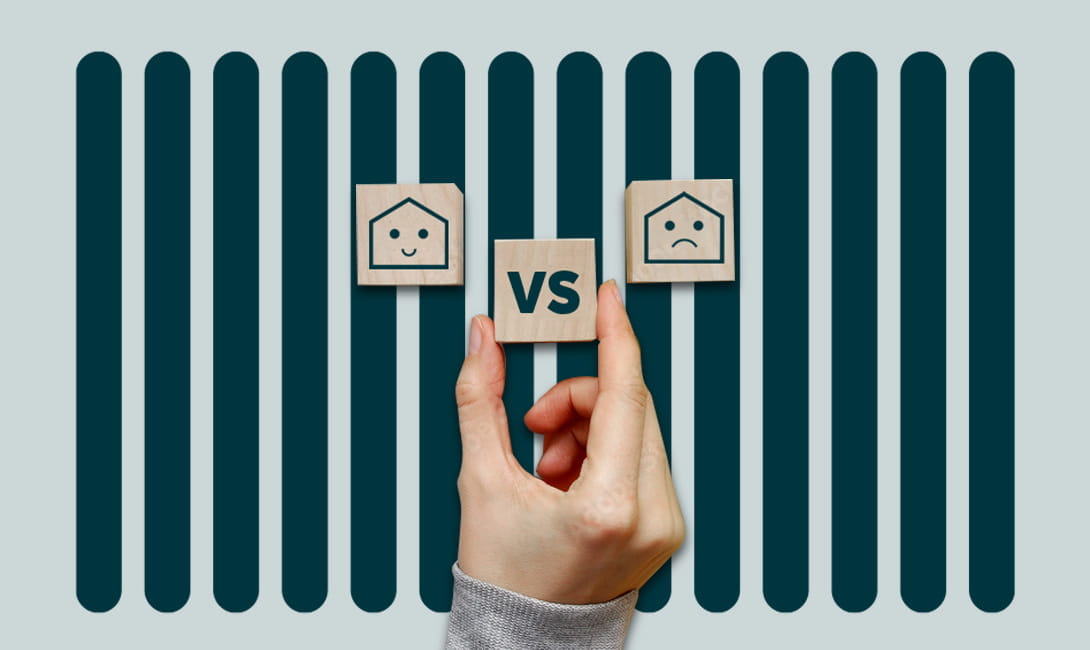- Energy saving
- Hydronic heating
- Radiators
The pros and cons of low temperature heating
What is low temperature heating?
In a regular heating system the water supply temperature is generally between 75°C and 85°C. In a low temperature heating system, however, this drops to somewhere between 45°C and 55°C, for, for example, condensing boilers, and even between 35°C and 45°C for heat pumps. To make sure that the heat emitters, such as radiators, convectors or underfloor heating, match the temperature regime and are able to deliver the appropriate heat output at a lower temperature, a different system design is required. The emitters must be sized correctly and suitable controls have to be installed.The requirements of low temperature heating
Before you can think of switching to low temperature heating, you need to make sure the building is properly insulated. Only then will you be able to maintain an even room temperature and enjoy a comfortable indoor climate as well as significantly reduce your energy consumption.
Additionally, you’ll need a suitable heat source such as a low temperature boiler or a heat pump as well as heat emitters that are able to transmit the required amount of heat to the room with low flow temperatures. Most radiators are suitable for low temperature heating, with a flow temperature of at least 45°C, provided that they are sized correctly.
For even lower temperatures there are also other solutions, such as fan radiators, that are designed for an optimal operation of modern, low-temperature hydronic central heating systems. Or even ultra-low temperature radiators, such as Ulow E2, which uses innovative E2 technology to increase the radiator’s performance up to 60% with increased convection.
Read our guide to low temperature radiators
The advantages of low temperature heating
Switching to low temperature heating has several important advantages. These include:
- Lower energy consumption
Provided that the building is properly insulated, low temperature heating can reduce energy consumption by about 30%. This is a win-win for the planet and for the household budget that’s otherwise set back quite a bit by the rising energy bills. - Sustainable materials
A low temperature heating system is sustainable by its inherent operation, but also by looking at the materials that are used to set it up. Low temperature radiators, for example, are 100% recyclable. So, after a life cycle of several decades, they can be completely recycled and do not generate waste. - Higher indoor comfort
Because of their low thermal inertia, low temperature radiators are able to adapt quicker and react more precisely to temperature changes. This way the room is always kept at the desired temperature, while the heat is distributed evenly throughout the room. - Energy source versatility
Low temperature heating can be combined with various heat sources. Switching to low temperature heating doesn’t necessarily mean switching to renewable energy. It can also be combined with, for example, a condensing gas boiler. But when you’re ready to transition to a renewable energy source, your heating system is ready as well. - Longer material lifespan
Thanks to the steady lower temperatures, various parts of the central heating system are subjected to less stress and therefore have a longer lifespan. This has to do, among other things, with a reduced corrosion rate, less thermal stress and reduced cavitation. - Added value for the interior design
When you switch to a low temperature heating system, the integration of new heat emitters allows for an update of the interior design as well as an increase in property value. New modern low temperature radiators can aesthetically enhance the rooms they’re placed, while underfloor heating frees up wall space that can be used to integrate other interior design elements.
The disadvantages of low temperature heating
If you decide on underfloor heating or panel heating for your low temperature heating system, you might find that it takes some time to reach the desired temperature. This means that low temperature heating is possibly less suitable if you want to heat up a room quickly or only use it for a limited period of time. However, this can this can be efficiently managed by maintaining the system at a setback temperature when the space is not occupied. Smart heating controls are ideal for monitoring and maintaining comfortable temperatures when they are required. With wireless control systems such as our Unisenza Plus range, it’s very easy to make different combinations and control the entire building through a single online app.
Moreover, electric radiators can be a good addition to the heating system as they provide almost instant heat and still offer a sustainable heating solution if you can fuel them with self-generated energy from photovoltaic panels. Additionally, the electric radiators we offer at Purmo Group are oil filled, which means they transmit lower temperatures and are subject to the same low thermal inertia as low temperature radiators.
Read our guide to choosing the right oil filled electric radiator
Not sure which heat emitters are the perfect match for your low temperature heating system? Feel free to contact us for tailor-made advice.

